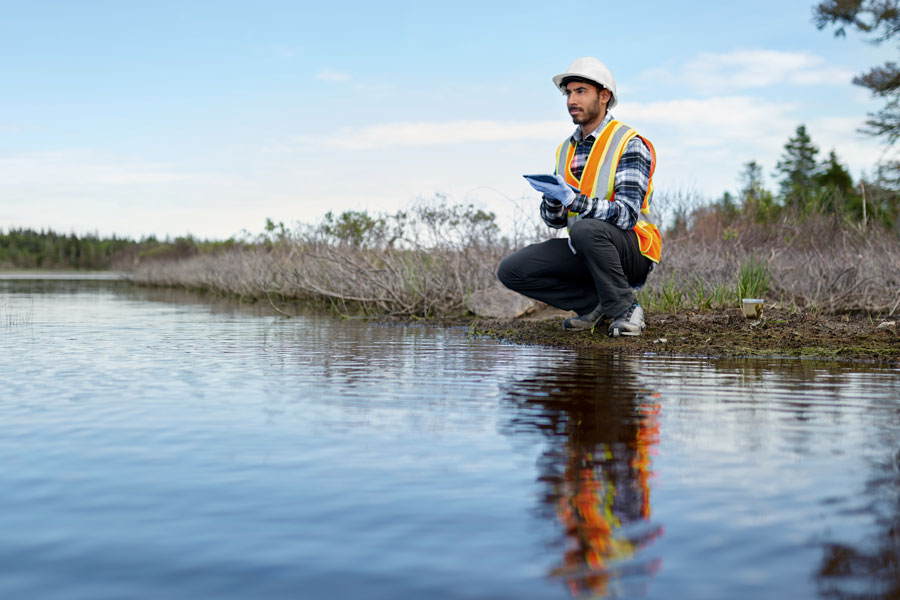Environmental & Coastal Statistics (Nassau & Suffolk Counties)

Long Island is surrounded by water, bordered by the Atlantic Ocean, Long Island Sound, Peconic Bay, and numerous estuaries and inlets. With more than 1,180 miles of shoreline, its environment is both a natural asset and a source of risk. Rising seas, hurricanes, and coastal erosion have direct impacts on residents, property values, and ecosystems.
This page compiles official data from the National Oceanic and Atmospheric Administration (NOAA), the New York State Department of Environmental Conservation (NYS DEC), and the U.S. Geological Survey (USGS) to provide a fact-based look at water quality, erosion rates, storm risk, and sea-level rise across Long Island.
Coastal & Environmental Indicators
| Category | Nassau County | Suffolk County | Long Island Total |
|---|---|---|---|
| Public Beaches Monitored | 65 | 190 | 255 |
| Annual Beach Closures (avg) | ~30 | ~60 | ~90 |
| Coastal Erosion “Hot Spots” | 5 | 12 | 17 |
| Average Sea-Level Rise | +12 inches since 1900 (NOAA) | Same | Region-wide |
| Hurricane Landfalls Since 1851 | 3 major | 4 major | 7 total |
Source: NOAA Tides & Currents, NYS DEC Beach Water Quality, USGS Coastal Studies.
Water Quality in Bays & Beaches
- Beach Monitoring: Over 250 public beaches are tested each summer. Nassau averages ~30 annual advisories/closures, while Suffolk records ~60, often due to elevated bacteria after heavy rain.
- Inland Bays: The Peconic Estuary and Great South Bay remain vulnerable to nitrogen loading from septic systems and fertilizer, contributing to harmful algal blooms.
- Trend: Overall water quality has improved since the 1990s, but closures still spike in years of heavy rainfall.
Coastal Erosion
USGS identifies erosion “hot spots” along both the North and South Shores:
- Nassau: Long Beach barrier island and Atlantic Beach.
- Suffolk: Montauk Point, Fire Island, and Smith Point Park are among the most vulnerable.
- Rates: Some stretches of Fire Island lose more than 3 feet of shoreline per year during high-energy storm periods.
Hurricane & Storm Risk
- Direct Hurricane Landfalls: 7 major storms have made direct landfall on Long Island since 1851, including the 1938 “Long Island Express”, Hurricane Gloria (1985), and Superstorm Sandy (2012).
- Storm Surge: NOAA modeling shows a Category 3 hurricane could generate 10–15 feet of coastal flooding in low-lying areas like Freeport, Lindenhurst, and Mastic Beach.
- Preparedness: FEMA flood maps designate large sections of South Shore communities within high-risk zones.
Sea-Level Rise
- Historical Trend: NOAA records show sea level at The Battery (NY Harbor, representative for LI) has risen ~12 inches since 1900.
- Projected Future: By 2050, projections call for another 8–12 inches of rise, depending on emissions scenarios.
- Impact: Higher baseline seas mean more frequent “sunny day” flooding, especially in South Shore communities.
Methodology
- Water Quality: NYS DEC Beach Water Quality program; EPA data.
- Erosion: USGS Coastal Studies and FEMA coastal erosion maps.
- Hurricanes: NOAA HURDAT2 Atlantic Hurricane Database.
- Sea-Level Rise: NOAA Tides & Currents sea-level trends, Battery and Montauk stations.
- Geography: Data covers Nassau and Suffolk shorelines, barrier islands, and inland bays.
FAQ
Q: Why do beaches close after rain?
A: Rainstorms wash bacteria, fertilizers, and pollutants into bays, temporarily raising contamination levels.
Q: Which Long Island areas are most at risk from hurricanes?
A: South Shore barrier islands (Long Beach, Jones Beach, Fire Island) and low-lying bayside communities face the highest storm-surge risk.
Q: How quickly is sea level rising?
A: About one inch per decade historically, but projections show acceleration — potentially one foot by 2050.
Q: Are erosion rates the same everywhere?
A: No. Some stretches of coast erode rapidly, while others remain stable or even gain sand due to longshore drift and replenishment projects.

